Do you have a question about the Triumph Tiger 800 and is the answer not in the manual?
Explains important information symbols like Warning, Caution, and Note.
Details warnings about off-road use, towing, load limits, and hot exhaust systems.
Warns about fuel flammability, refueling safety, and exhaust fume toxicity.
Advises on essential protective gear like helmets, boots, gloves, and clothing for rider safety.
Provides guidance on safe motorcycle parking procedures and precautions.
Warns about using only approved parts and accessories for safety.
Stresses consulting dealers for maintenance and warns against incorrect modifications.
Covers warnings about riding under fatigue/intoxication, licensing, and defensive riding.
Advises on maintaining control by keeping hands on handlebars and using footrests.
Explains bank angle indicators are not a guide for safe banking and warns against unsafe angles.
Illustrates the locations of various warning labels on the motorcycle.
Identifies various parts of the Tiger 800 motorcycle using numbered diagrams.
Continues identifying parts of the Tiger 800 motorcycle with numbered diagrams.
Identifies various parts of the Tiger 800XC motorcycle using numbered diagrams.
Continues identifying parts of the Tiger 800XC motorcycle with numbered diagrams.
Identifies common parts for all models, illustrated by the Tiger 800.
Explains the location and importance of the Vehicle Identification Number (VIN).
Explains the location and importance of the engine serial number.
Details the layout and function of the motorcycle's instrument panel and indicators.
Details the operation and positions of the ignition switch and steering lock.
Explains the handlebar adjustment range and recommended procedure.
Provides guidelines for the initial running-in period of a new motorcycle.
Outlines the steps for starting the motorcycle's engine.
Provides essential instructions and warnings for effective motorcycle braking.
Explains the ABS system, its warning light, and its operation.
Gives detailed instructions on how to park the motorcycle safely.
Warns that incorrect loading can lead to unsafe riding conditions and accidents.
Instructs the rider on how to brief the passenger for safe operation.
Warns against carrying passengers too short to reach footrests, causing instability.
Warns against riding at speeds above 80 mph with accessories or payload.
States objects on passenger seat must not exceed 5kg, be secure, or impair control.
Explains the importance of scheduled maintenance for safety and reliability.
Details engine oil inspection, level checking, and specifications.
Covers brake wear inspection, pad replacement, and breaking-in procedures.
Covers tyre types, markings, and safety considerations.
Outlines the steps for preparing the motorcycle for storage.
Lists the physical dimensions of the Tiger 800 and Tiger 800XC.
Details engine specifications such as type, displacement, bore, and stroke.
Lists transmission type, clutch type, and final drive chain details.
Specifies recommended tyre sizes and on-road pressures.
Explains important information symbols like Warning, Caution, and Note.
Details warnings about off-road use, towing, load limits, and hot exhaust systems.
Warns about fuel flammability, refueling safety, and exhaust fume toxicity.
Advises on essential protective gear like helmets, boots, gloves, and clothing for rider safety.
Provides guidance on safe motorcycle parking procedures and precautions.
Warns about using only approved parts and accessories for safety.
Stresses consulting dealers for maintenance and warns against incorrect modifications.
Covers warnings about riding under fatigue/intoxication, licensing, and defensive riding.
Advises on maintaining control by keeping hands on handlebars and using footrests.
Explains bank angle indicators are not a guide for safe banking and warns against unsafe angles.
Illustrates the locations of various warning labels on the motorcycle.
Identifies various parts of the Tiger 800 motorcycle using numbered diagrams.
Continues identifying parts of the Tiger 800 motorcycle with numbered diagrams.
Identifies various parts of the Tiger 800XC motorcycle using numbered diagrams.
Continues identifying parts of the Tiger 800XC motorcycle with numbered diagrams.
Identifies common parts for all models, illustrated by the Tiger 800.
Explains the location and importance of the Vehicle Identification Number (VIN).
Explains the location and importance of the engine serial number.
Details the layout and function of the motorcycle's instrument panel and indicators.
Details the operation and positions of the ignition switch and steering lock.
Explains the handlebar adjustment range and recommended procedure.
Provides guidelines for the initial running-in period of a new motorcycle.
Outlines the steps for starting the motorcycle's engine.
Provides essential instructions and warnings for effective motorcycle braking.
Explains the ABS system, its warning light, and its operation.
Gives detailed instructions on how to park the motorcycle safely.
Warns that incorrect loading can lead to unsafe riding conditions and accidents.
Instructs the rider on how to brief the passenger for safe operation.
Warns against carrying passengers too short to reach footrests, causing instability.
Warns against riding at speeds above 80 mph with accessories or payload.
States objects on passenger seat must not exceed 5kg, be secure, or impair control.
Explains the importance of scheduled maintenance for safety and reliability.
Details engine oil inspection, level checking, and specifications.
Covers brake wear inspection, pad replacement, and breaking-in procedures.
Covers tyre types, markings, and safety considerations.
Outlines the steps for preparing the motorcycle for storage.
Lists the physical dimensions of the Tiger 800 and Tiger 800XC.
Details engine specifications such as type, displacement, bore, and stroke.
Lists transmission type, clutch type, and final drive chain details.
Specifies recommended tyre sizes and on-road pressures.
| Displacement | 800 cc |
|---|---|
| Fuel System | Multipoint sequential electronic fuel injection |
| Clutch | Wet, multi-plate |
| Gearbox | 6-speed |
| Frame | Tubular steel trellis frame |
| Rear Wheel | 17 x 4.25 in |
| Rear Tyre | 150/70 R17 |
| Engine Type | Liquid-cooled, 12-valve, DOHC, in-line 3-cylinder |
| Bore x Stroke | 74.0mm x 61.9mm |
| Max Power | 94bhp (70kW) @ 9, 500rpm |
| Max Torque | 79Nm |
| Exhaust | Stainless steel 3 into 1 exhaust system |
| Front Suspension | 43mm upside down forks |
| Rear Suspension | Monoshock with adjustable preload |
| Front Brakes | Twin floating discs, 2-piston calipers |
| Rear Brakes | Single 255mm disc, single piston caliper |
| Front Wheel | 19 x 2.5 in |
| Front Tyre | 100/90-19 |
| Dimensions | 2215mm x 865mm |
| Seat Height | 810-830mm |
| Fuel Tank Capacity | 19 L |
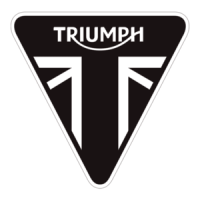
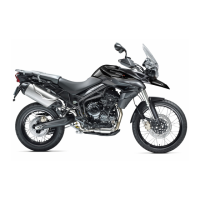



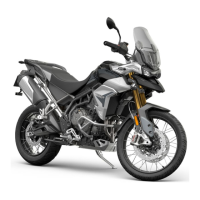
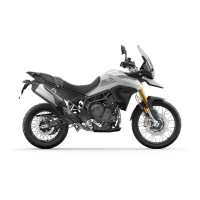
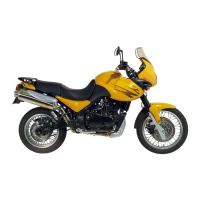

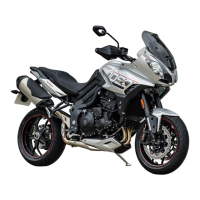
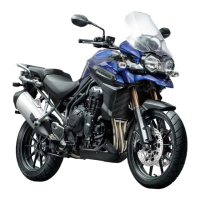
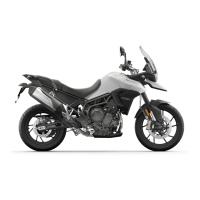
